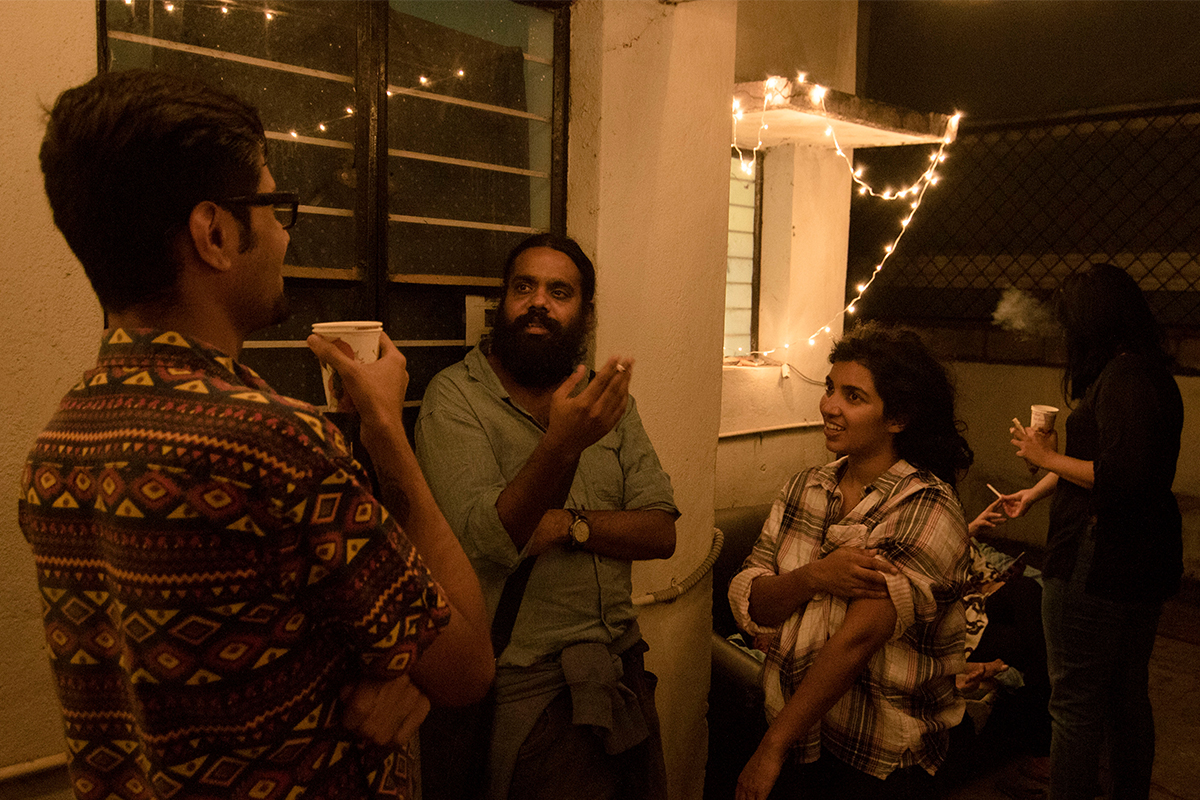

Insecure Science
Art-Science Group Show
Experiential Cognition Lab, Bengaluru, 2017
Curatorial Note:
Throughout history, understanding the physical world was often hindered by inaccuracies and assumptions due to limited scientific insight. Today, an opposite issue arises: an overwhelming flood of data that is often accessible only to scientific specialists, leaving many feeling detached from the inquiries of material science. A distinct dichotomy exists between objective and subjective truths, where the lived human experience diverges from scientific empiricism.
To address this challenge, a new knowledge system that values qualitative experience alongside quantitative data must be conceived. Creating new knowledge hinges on cognitive processes that combine concrete and abstract knowledge systems. Bridging cognition with everyday experience requires a fresh vocabulary, a unique aesthetic, and an interdisciplinary space that integrates the realms of art and science.
As an artist and curator, Shashank presents the XPC LAB's first art-science group show, offering viewers an immersive experience in cognitive science’s foundational concepts and inviting a shared exploration of this interdisciplinary frontier.
ArtScientists:
Dev Ethan Valladares | Gauri Nagpal | Pratyush | Shashank Satish | Sultana
Curator: Shashank Satish

Mirror|rorriM, 2017
Medium: Mirror, Smoke, Laser, Video Projection, Fabric, Audio.
Can we truly measure consciousness?
Cognitive neuroscience, with brain imaging at the forefront, currently maps and correlates neural signals through studies on human and animal brains. Since the 1970s, brain imagery has sought to capture cross-sectional views of neural activity—a static approach to understanding dynamic brain states. Cross-sectional imaging has long been a standard in science and medicine, examining neural activity under controlled environmental conditions. Yet, this method’s capacity remains limited to capturing consciousness only in fragments, unable to fully explain the "how" or "why" behind conscious awareness.
Our brains exist in a constant flux of conscious and subconscious neural interactions. Scientific studies of these states through brain imagery rely on controlled settings, largely detached from the richness of everyday experience. For instance, fMRI research provides reductive images isolated from our lived sensory environments, limiting insights to what is observable under sterile lab conditions. This technology has advanced our understanding of the mind as a phenomenon but continues to examine it within confined measured spaces.
Mirror|rorriM challenges this reductive imagery approach in functional Magnetic Resonance Imaging (fMRI), aiming to reimagine brain activity as more than isolated, static snapshots. This installation mirrors the dynamic, intricate activity of the brain outside laboratory confines. Re-presenting fMRI’s captured imagery, it situates the brain’s complexity within art, symbolizing an expanded view of consciousness that extends beyond the boundaries of scientific visualization.
Mirror|rorriM
Youtube video: 2 mins 5 sec | Best viewed on 1080p.

Red, 2017
Medium: Spoken word, Audio headphones.
Of nearly 7,000 languages worldwide, English stands out as one of the most commonly used forms of communication, particularly in today’s globalized landscape. The reader’s ability to understand the words on this page showcases the brain’s complex capacity to link meanings with words and visual cues. Language and cognition are deeply interconnected, shaped by daily experiences and environmental contexts. This relationship is evident in children who, through cognitive learning, begin to grasp spoken language by correlating sounds with concepts, making sense of their world and meeting the intrinsic need to communicate.
Cognitive linguistics explains that language is contextually situated and embodied, with semantics giving meaning to words that the brain adapts to, remembers, and uses. This adaptability spans from local tribal languages that rely on clicks and sounds to global languages like English, highlighting the brain's remarkable ability to associate language with the commonly understood structures of grammar and syntax. As explored in intertextual literary theory, our current language practices are built upon centuries of linguistic evolution. The human brain also dedicates a significant portion to processing visual information, aiding in associating language with mental concepts and images.
Red aims to embody cognitive language studies through an artistic experiment in Cognitive Dissonance, inviting listeners to engage with the semantics of “red” in unusual contexts. Using spoken word, it playfully disrupts conventional associations with the colour, inviting new mental imagery and interpretations.
Audio Recording. Duration: 2 min
Images from the exhibition
Photography: Rutwij Paranjape








